Related Research Articles
The Swan River Colony, also known as the Swan River Settlement, or just Swan River, was a British colony established in 1829 on the Swan River, in Western Australia. This initial settlement place on the Swan River was soon named Perth, and it became the capital city of Western Australia.
The history of Tasmania begins at the end of the Last Glacial Period when it is believed that the island was joined to the Australian mainland. Little is known of the human history of the island until the British colonisation of Tasmania in the 19th century.

John Gilbert was an English naturalist and explorer. Gilbert is often cited in the earliest descriptions of many Australian animals, many of which were unrecorded in European literature, and some of these are named for him by those authors. Gilbert was sent to the newly founded Swan River Colony and made collections and notes on the unique birds and mammals of the surrounding region. He later joined expeditions to remote parts the country, continuing to make records and collections until he was killed during a violent altercation at Mitchell River (Queensland) on the Cape York Peninsula.

The topsail schooner Enterprize, also spelled and illustrated as Enterprise, was built in Hobart, Tasmania in 1830 by William Pender. It was used for coastal transport of cargo such as coal, livestock, and supplies.
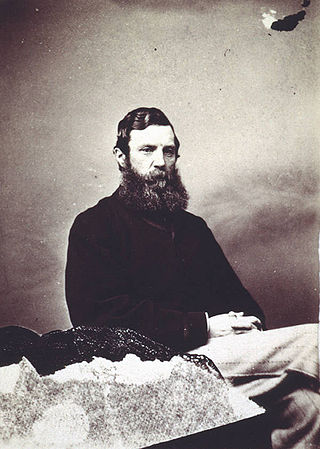
Sir Richard Dry, KCMG was an Australian politician, the son of United Irish convict, who was Premier of Tasmania from 24 November 1866 until 1 August 1869 when he died in office. Dry was the first Tasmanian-born premier, and the first Tasmanian to be knighted.
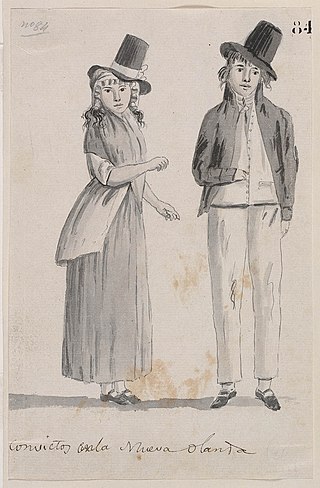
Between 1788 and 1868, about 162,000 convicts were transported from Great Britain and Ireland to various penal colonies in Australia.

John Helder Wedge was a surveyor, explorer and politician in Van Diemen's Land.

Ronald Campbell Gunn, FRS, was a South African-born Australian botanist and politician.
The modern history of the Australian city of Hobart in Tasmania dates to its foundation as a British colony in 1804. Prior to British settlement, the area had been occupied for at least 8,000 years, but possibly for as long as 35,000 years, by the semi-nomadic Mouheneener tribe, a sub-group of the Nuenonne, or South-East tribe. The descendants of the indigenous Tasmanians now refer to themselves as 'Palawa'.
Edward Abbott was a soldier, politician, judge-advocate and public servant who served at Parramatta, the Hawkesbury River and Norfolk Island in the colony of New South Wales, now part of present-day Australia. He also served at the settlements of Launceston and Hobart in Van Diemen's Land, which was part of New South Wales until 1825, when Van Diemen's Land became a self-governing colony.
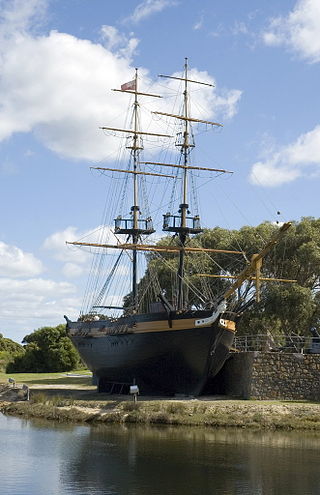
Amity was a 148-ton brig used in several notable voyages of exploration and settlement in Australia in the early nineteenth century.
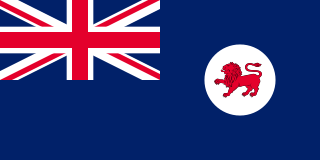
The Colony of Tasmania was a British colony that existed on the island of Tasmania from 1856 until 1901, when it federated together with the five other Australian colonies to form the Commonwealth of Australia. The possibility of the colony was established when the Parliament of the United Kingdom passed the Australian Constitutions Act in 1850, granting the right of legislative power to each of the six Australian colonies. The Legislative Council of Van Diemen's Land drafted a new constitution which they passed in 1854, and it was given royal assent by Queen Victoria in 1855. Later in that year the Privy Council approved the colony changing its name from "Van Diemen's Land" to "Tasmania", and in 1856, the newly elected bicameral parliament of Tasmania sat for the first time, establishing Tasmania as a self-governing colony of the British Empire. Tasmania was often referred to as one of the "most British" colonies of the Empire.
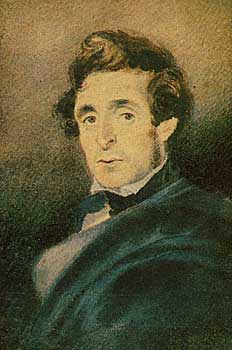
William Buelow Gould was an English and Van Diemonian (Tasmanian) painter. He was transported to Australia as a convict in 1827, after which he would become one of the most important early artists in the colony, despite never really separating himself from his life of crime.
Elizabeth was a merchant ship built at Great Yarmouth, England in 1825. She made one voyage transporting convicts from Hobart Town to Sydney, Australia.
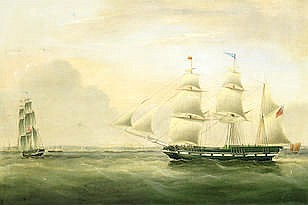
Eliza was a merchant ship built at Prince Edward Island, Canada in 1824. She made one voyage transporting convicts from Hobart Town to Sydney, and two to the Swan River Colony. She was last listed in 1843.
Gilmore, was a merchant ship built at Sulkea, opposite Calcutta, British India, in 1824. In 1829-30 she made a voyage delivering settlers to the Swan River Colony in Western Australia. She then made two voyages transporting convicts from England to Tasmania. She was wrecked in 1866.
Lotus was a ship launched at Whitby, England in 1826. She made several voyages to Australia carrying emigrants. She made one voyage transporting convicts to Van Diemen's Land. On that voyage, in 1833, she rescued 61 survivors from Hibernia, which a fire had destroyed in the South Atlantic as Hibenia was carrying immigrants to Van Diemen's Land. Lotus herself was lost in May 1844 while sailing between Bristol and Quebec.
Bombay was launched in 1801 at Daman/Demaun. Her early career is obscure. From 1821 on she assumed Calcutta registry. Between 1832 and 1840 she made three voyages from London as a whaler. In 1842 she carried settlers for the New Zealand Company. She was last listed in 1853.
Wanstead was launched in 1826 at St John, New Brunswick. From 1826 on she sailed from England, first as a West Indiaman. She made two voyages transporting passengers to Tasmania, one voyage in 1827–28, and the other in 1829–30, stopping at the Swan River Colony. Between 1831 and 1837 she made one voyage as a whaler, catching whales off Japan, and New Zealand. She then returned to trading with the West Indies. Her crew abandoned her at sea in September 1843.
William Henry Breton was a lieutenant in the Royal Navy who wrote the memoirs Excursions in New South Wales, Western Australia and Van Dieman's Land, during the years 1830, 1831,1832 and 1833, first published in 1833 and Scandinavian Sketches, or, A Tour in Norway, published in 1835. The books resulted from private visits to Australia, or New Holland as it was then known, in 1829-30 and 1832-33 and to Norway, Sweden and Russia in 1834.
References
- ↑ Serventy, D. L.; Whittell, H. M. (1951). "III (a) The Pioneer Observers". A handbook of the birds of Western Australia (with the exception of the Kimberley division) (2nd ed.). Perth: Paterson Brokensha. p. 26.